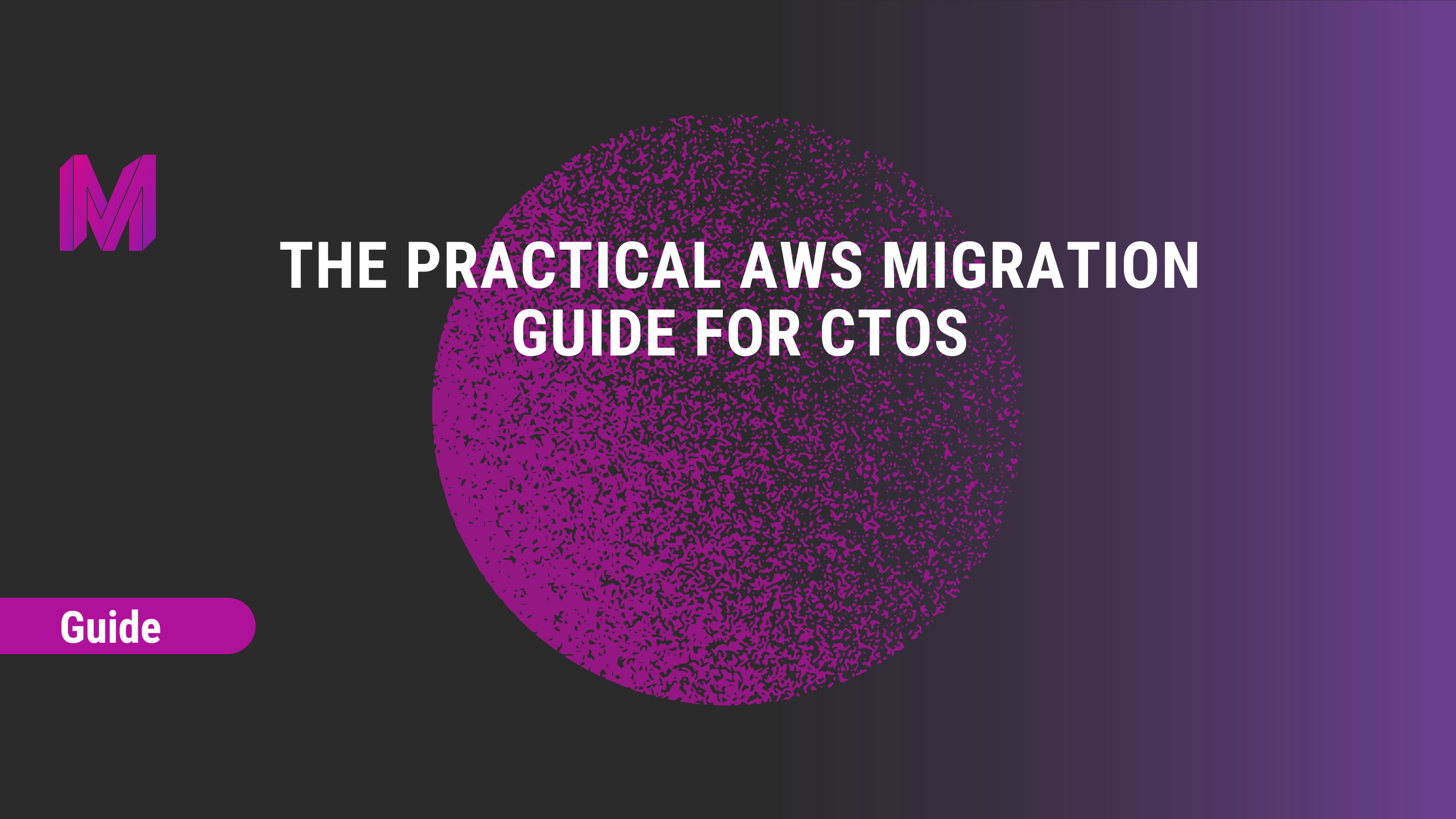
The Practical AWS Migration Guide for CTOs
Migrating to AWS is not merely a technology choice — it's a strategic inflection point. For many CTOs, it's a once-in-a-career initiative that impacts budgets, teams, security, velocity, and future scalability. The implications go far beyond changing where your servers run. Done well, a migration sets the foundation for a faster, more adaptive, and more resilient organization. Done poorly, it creates drag, uncertainty, and even reputational risk.
This guide is designed to offer clarity for CTOs and technology leaders planning or considering migration to AWS. It draws not from white papers, but from real-world experience guiding startups and growth-stage companies through this exact journey. Each part of the guide unpacks a core aspect of AWS migration with hands-on insight, practical framing, and business-aligned context.
AWS adoption is often driven by the need to support rapid product growth, ensure operational stability, and enable global scalability. One SaaS startup moved to AWS to eliminate hardware procurement cycles that delayed every new customer onboarding. It unlocked two new markets in a single quarter.
Whether due to capacity limitations, outdated infrastructure, or developer friction, the migration trigger varies. For example, a fintech company unable to meet latency SLAs in Europe found AWS's regional architecture helped meet compliance without spinning up a new data center.
AWS may not appear cheaper line-by-line, but offers long-term value through elasticity, reliability, and staffing efficiency. A company moving off colocation cut costs by eliminating redundant roles and downtime, despite higher monthly infra bills.
Delaying migration often increases risk and slows momentum. A digital media firm stuck in a five-minute deploy cycle struggled to scale during peak demand. Migration helped them cut deploy time and load latency, improving revenue per visit.
Timelines vary by system complexity. A two-tier API platform migrated in six weeks; a microservices monolith took nine months. Factors included data volume, system coupling, and team autonomy.
AWS offers credits, architectural reviews, migration programs, and co-funding. One early-stage startup qualified for over $50k in migration support simply by aligning their timeline with AWS partner involvement.
Internal resistance is common. One company struggled to migrate because devs feared retraining and ops feared losing control. A change champion and a phased rollout helped realign incentives and restore momentum.
Start with a self-contained service. A healthcare SaaS provider first migrated only their reporting pipeline, proving both cost and performance gains before committing wider resources.
Start with a self-contained service. A healthcare SaaS provider first migrated only their reporting pipeline, proving both cost and performance gains before committing wider resources.
Start with a self-contained service. A healthcare SaaS provider first migrated only their reporting pipeline, proving both cost and performance gains before committing wider resources.
The best cases aren't just cost-driven. One CTO mapped lost revenue due to deployment friction and used it to justify migration. Tying migration to business metrics made the case unambiguous.
Assessment, Planning, Mobilization, Execution, Optimization. Each phase shifts the risk surface. For example, rushing execution before stakeholder alignment during mobilization led one client to a failed rollback and extra rework.
Common issues include lack of tagging, over-reliance on defaults, or IAM mismanagement. A media company left untagged S3 buckets running for months before discovering the associated costs.
CTOs must navigate shared responsibility and enforce secure defaults. One compliance-focused org failed an audit after skipping centralized logging. Post-migration, they built it into their CI/CD pipelines.
Success isn’t the cutover — it’s what follows. A startup saw no gains until they restructured their teams to own infrastructure alongside code. That’s when AWS enabled faster releases and better cost control.
From video platforms to fintechs, migration paths vary. A growth-stage SaaS business saved 20% infra costs by moving compute-intensive workloads to spot instances — but only after running a pilot with performance benchmarking.
Reusable assets like readiness checklists, ROI calculators, and stakeholder maps helped multiple clients accelerate and standardize their process. One team used a decision matrix template to align VP Engineering and CFO within a single planning session.
Each section in this guide links to a deep dive, with actionable insights and examples to help you navigate your own AWS migration journey. Whether you're planning a proof of concept or already deep in design, this guide offers tested patterns and avoidable traps from the field.